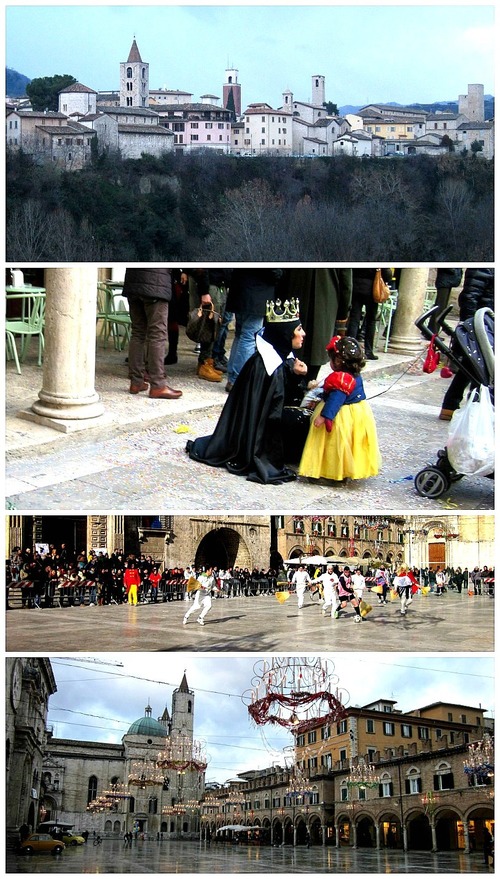
The Catholic festival of Carnevale occurs for the week before Lent and ends on Martedi Grasso (Mardi Gras). During the festival, Venice becomes flooded with masked figures—tourists heading to the sinking city from all over the world. Parties, concerts, and entertainment abound, pacifying the sea of people with high expectations.
To leave the city becomes almost impossible. A train’s platform is announced and suddenly everyone around is sprinting towards it. They shove themselves inside the train and pull friends in through the windows until you and the remaining crowd are abandoned on the platform, to await the next train
This is how a friend of mine told it, who traveled to Venice for one day during Carnevale festivities; to her, it was an unforgettable (although crowded) experience. I, instead, headed to Ascoli Piceno for the Carnevale weekend, a city nestled in the mountains where my grandmother lives. Ascoli Piceno is a well-kept secret where tourists are few and far between. Native Italians travel there for celebrations as La Quintana (a medieval festival in July) and Carnevale rather than to tourist-infested canals of Venice.
In Ascoli, Carnevale days and activities are scattered throughout the week.
One day they held a parade of costumed children walking through the streets with their schoolmates. The next day there was a tournament of “Ramazza” essentially soccer but played with regulation broomsticks. The game, which at first seemed a joke with some teams wearing dresses and others white jumpsuits, evolved more properly into soccer, with nasty fouls and emotional outbreaks and arguing with the wig-donning referees.
Late-night masquerade parties preceded the all-day “Carnevale in Piazza” (Carnival in the Square) where hundreds of Ascolani (from Ascoli Piceno) and Marcheggiani (from the surrounding region Le Marche) arrived to enjoy themselves outside. Carnevale of true Italian towns has developed into Halloween-style costumes than the masquerade tradition of Venice, so wandering among the crowd were characters as Mickey Mouse, a giraffe, Batman, political candidates, and a pirate baby with a marker mustache, among many others. Scattered between the crowd were stations—one with a wagon representing politicians as pigs, then strange play involving an owl and a knight, another with a man preaching politics to the crowd, then a band singing a cover of “Gangnam Style,” another with everyone dressed up as sheep… All this among a few public squares blooming with people and balloons and fish stands.
The Carnevale of today has relinquished many of its Catholic roots, as many other holidays like Christmas have lost their own religious requirements. It has become a festival fixed simply in entertainment and grand distractions from everyday life. While it may have diverted from its original intent, it has maintained an overwhelming feeling of community, which to me is truly the heart and tradition of Carnevale.
See on iuoverseas.wordpress.com
via Tumblr http://italianentertainment.tumblr.com/post/43558495077
